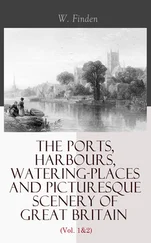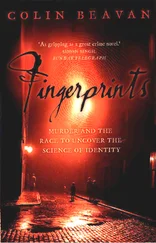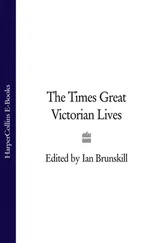William Kent had a furious curiosity about little things, a conviction that they held the big secrets. Over the next five years he pursued his calling at the Cambridge Zoological Museum, then at the invertebrate collection of the Royal College of Surgeons, and then at the zoology department of the British Museum, where his salary rose above PS300. Here he fell for corals - he declared himself 'smitten with them'. Corals are small, soft marine animals whose limestone skeletons create reefs in tropical seas. Through their 'agency', in William's words, 'new islands and countries are made to rise from the bed of the trackless ocean' - they connected zoology and geology, the quick and the dead.
Charles Dickens died in 1870, leaving an unfinished work The Mystery of Edwin Drood . By dint of its author's death, this novel became the purest kind of murder story, the kind whose tension was never dissolved. 'Alone, perhaps, among detective-story writers, he never lived to destroy his mystery,' wrote G.K. Chesterton. 'Edwin Drood may or may not have really died; but surely Dickens did not really die. Surely our real detective liveth and shall appear in the latter days of the earth. For a finished tale may give a man immortality in the light and literary sense; but an unfinished tale suggests another immortality, more essential and more strange.'
In 1865 Dickens, like many others, had been forced to question his belief that Samuel Kent and Elizabeth Gough had committed the Road Hill murder. As if revisiting the case, his last novel featured a brother and sister who recall Constance and William Kent. The orphaned and exotic Helena and Neville Landless frequently ran away from their unhappy home. 'Nothing in our misery ever subdued her,' Neville says of his sister, 'though it often cowed me. When we ran away . . . the flight was always of her planning and leading. Each time she dressed as a boy, and showed the daring of a man. I take it we were seven years old when we first decamped; but I remember, when I lost the pocket-knife with which she was to have cut her hair short, how desperately she tried to tear it out, or bite it off.' Helena may have been the leader, but Neville admits to having a 'misshapen young mind' and murderous desires. He matches his sister in loathing and in cunning: 'I have had, sir, from my earliest remembrance, to suppress a deadly and bitter hatred. This has made me secret and revengeful.'
Dickens depicted the two as dark, foreign creatures, the embodiment of suspense. They are 'slender, supple, quick of eye and limb; half shy, half defiant; fierce of look; an indefinable kind of pause coming and going on their whole expression, both of face and form, which might be equally likened to the pause before a crouch or a bound'.
In January 1872 Samuel Kent fell seriously ill with liver disease and William took the train up to Wales. From his father's bedside he wrote a letter to his supervisor at the British Museum, who had lent him PS5 for the trip: 'You can imagine how thankful I am to have the opportunity to stay with him for a few days there being so many little things I can do to contribute to his comfort.' On 5 February he wrote in another letter: 'All is over ! In the sorrow in which we are all plunged you will I am sure excuse my absence for a few more days.' Samuel was buried next to his second wife at Llangollen. He left his money to the children of his second marriage, to be held in trust until they reached the age of twenty-one. William and the proprietor of the Manchester Guardian - presumably a friend of the family - were joint executors.
Four months after his father's death, William married Elizabeth Bennett, a barrister's daughter of twenty-two, and moved to Stoke Newington. At William's request, his new father-in-law petitioned the government for Constance's release, but without success. In 1873 William was appointed resident biologist at the Brighton Aquarium, which had opened the previous year, a spectacular gothic arcade sunk into the promenade by the pier. He and Elizabeth took up residence at Upper Rock Gardens, a Regency terrace near the seafront.
The public craze for aquaria provided scientists with unprecedented opportunities for studying live sea creatures, but William claimed that the commercial backers of the Brighton venture thought a resident naturalist 'an unnecessary extravagance', and were hostile towards him. He fell out with his colleagues as well. He accused one of his juniors of undermining him, and then was himself accused of ungentlemanly conduct by a fellow researcher. The pair had witnessed the aquarium's two octopuses copulating, and agreed to write a joint paper on the subject. When some of William's observations appeared in a letter to The Time , the colleague accused him of duplicity. William indignantly resigned his post. He had a high-handed, insensitive streak, a side-effect of the sometimes maniacal passion with which he approached his work.
The next year William was appointed curator and naturalist at the new Manchester Aquarium. He rebuilt the tanks, fitted blinds to block out glare, installed a system to circulate the water and solved the problem of how to keep large seaweeds alive in artificial conditions. His official guidebook to the creatures in his care, published in 1875, conjured up an underwater world of great range and drama, in which he observed the victims and the predators alike with unflinching yet tender fascination. He wrote of the 'brilliant expressive eyes' of the smooth blenny in tank 13, a 'brave little knight' who protected his blenny 'wives'; of the 'remarkably pugnacious' spider crab in tank 6, who tore the limbs off his brother crabs; and of the spotted dogfish in tank 10, whose second eyelid during the day remained 'entirely closed over the true eye. When darkness has fully set in, this diaphragm is completely retracted, leaving the eyeball free and gleaming.'
At the Manchester Aquarium, William discovered that seahorses used sound to communicate:
The knowledge of this remarkable circumstance was arrived at in the following manner. Early last May, the majority of the specimens of the fine collection of these singular little fish were brought to England from the Mediterranean . . . Among them were several examples remarkable at the time, for the brightness of their colours, some being bright red, others pale pink, yellow, almost pure white . . . A few of these were kept by the writer for some days in a private room, to permit the opportunity of a hurried coloured sketch. An ordinary inverted bellglass was devoted to their reception, while the individuals 'sitting for their likeness' were for a short time isolated in a still smaller glass receptacle. During one of these occasions a sharp little snapping noise was heard at short and even intervals, to proceed from the larger vase on a side table, and which was immediately afterwards responded to in a similar manner from the smaller one close at hand. Surprise and admiration was intense on discovering that it proceeded from the mouth of the usually regarded dumb little fish, and closer inspection elicited that the sound was produced by a complex muscular contraction and sudden expansion of the lower jaw.
In 1875 William's wife, Elizabeth, died suddenly aged twenty-five, of an obstruction of the bowel. Within a year he married again - his second wife was Mary Ann Livesey, a handsome, square-faced woman of thirty - and moved to London to become curator and naturalist of the new Royal Aquarium, a magnificent construction opposite the Palace of Westminster. Over the next few years William won a reputation as an expert in marine biology. In 1882 he published the third and last volume of his nine-hundred-page A Manual of the Infusoria , with fifty of his own illustrations of the microscopic water creatures. At 87 St Stephen's Avenue, Shepherd's Bush, his wife was delivered that May of a stillborn boy.
Читать дальше












